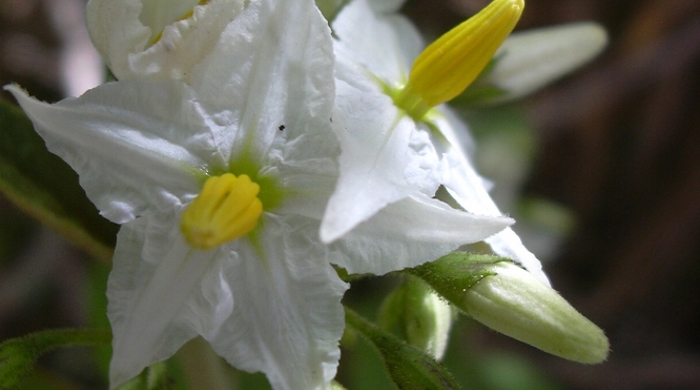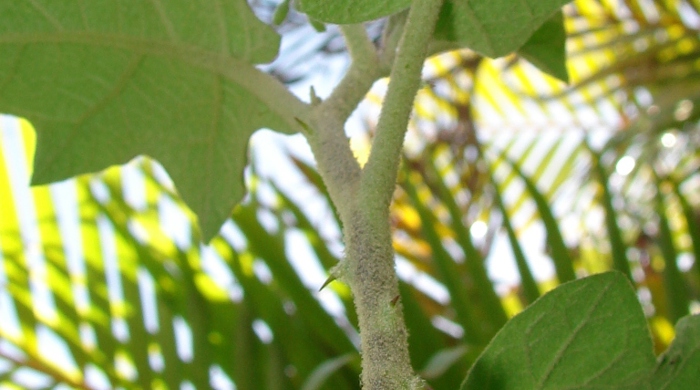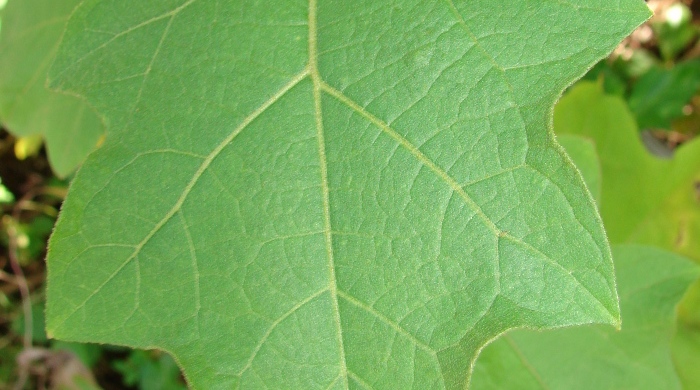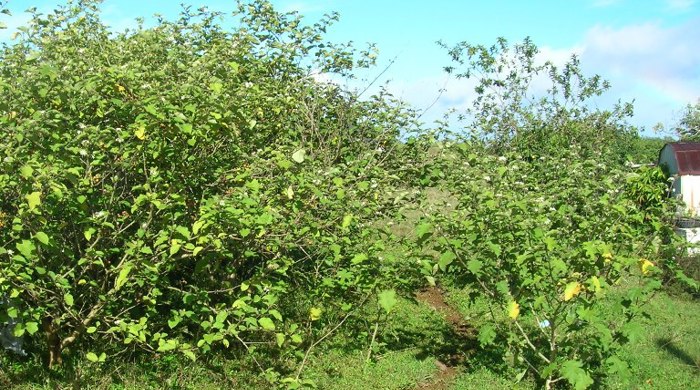Solanum torvum
Devil's fig
Also known as:
Turkey berry, Thai eggplant
Family: Solanaceae
Origin: North and South America
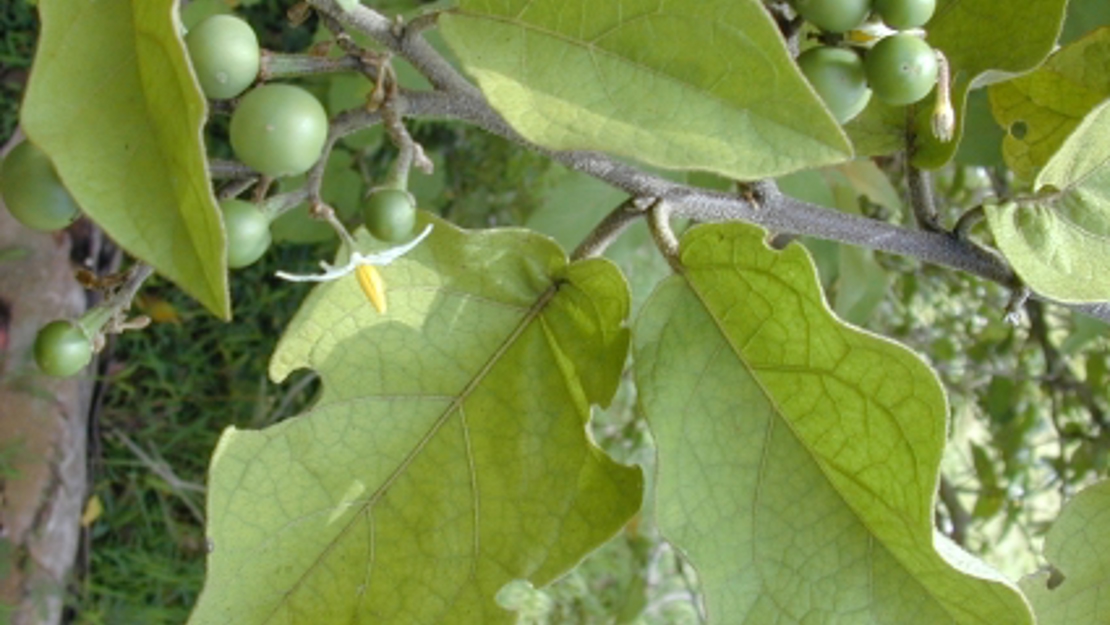
Regional Pest Management Plan (RPMP) status
- Hauraki Gulf Controlled Area Notice pest
- Whole region — Eradication
General description
Multi-branching, perennial shrub < 4 m tall. Stems are densely hairy, grey, and bear scattered prickles. Leaves are simple, < 10 x 15 cm and lobed, with grey/green tops and white/yellow/green undersides. Flowers are star-shaped, white with yellow stamens, and arranged in branched clusters. Fruit is round, yellow/green, and contains flattened white/pale brown seeds.
What you need to know
To help protect our environment:
- you must not breed, distribute, release or sell devil’s fig within the Auckland region
- you must not plant devil’s fig within the Auckland region.
Habitats
Disturbed areas, roadsides, wasteland, scrubland, plantations, pasture.
Dispersal
Seed dispersed by birds. Human-mediated dispersal through movement of contaminated soil and equipment.
Impact on environment
Can create impassable thickets. Provides habitat and food resources for introduced mammals. Suppresses forage in pasture.
Control
Recommended approaches
Physical control
Method: Manual removal for small infestations can be effective if done before they produce seeds. Removing as much as the root system as possible and replanting the area with desirable plants species will help reduce the changes of regrowth. Monitoring the area and removing any seedling before they set seed will work towards permanent control.
Plant parts requiring disposal: Seed heads if practical and roots.
Disposal options: Greenwaste bins or landfill.
Biocontrol
Biocontrol is currently not available for this species.
Community agrichemical control recommendations
No qualifications: Cut stump and paste freshly cut base of stems with double strength glyphosate gel.
Basic Growsafe certified: Cut stump and spray freshly cut base with 250ml glyphosate.
Certified Handler/Experienced agrichemical user: Stump treat with 60ml triclopyr 600/1L or picloram gel Or Foliar spray with 60ml triclopyr 600 + 10ml organic silicone/10L (backpack).
* Apply chemicals as per instructions on the herbicide container.
* PPE gear should be always worn when missing and applying chemicals.
